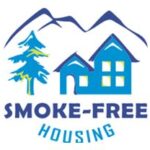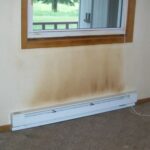The Right to Live in a Smokefree Home

THE RIGHT TO LIVE IN A SMOKEFREE HOME
 JUNEAU, Alaska (January 19, 2016) – Secondhand smoke exposure from burning tobacco products among non-smoking adults and children can cause or worsen a wide range of health problems. Children are especially vulnerable. About 37% of children in the U.S.A. have been exposed to secondhand smoke. Secondhand smoke causes lower respiratory tract infections in infants and children, sudden infant death syndrome (SIDS) deaths, buildup of fluid in the middle ear, and asthma flare-ups (1).
JUNEAU, Alaska (January 19, 2016) – Secondhand smoke exposure from burning tobacco products among non-smoking adults and children can cause or worsen a wide range of health problems. Children are especially vulnerable. About 37% of children in the U.S.A. have been exposed to secondhand smoke. Secondhand smoke causes lower respiratory tract infections in infants and children, sudden infant death syndrome (SIDS) deaths, buildup of fluid in the middle ear, and asthma flare-ups (1).
Combined data from the Behavioral Risk Factor Surveillance System (BRFSS) for the Southeast Alaska region for 2011-2013, shows that most people favor no smoking in the home and 90% respondents say they have a home smoking ban. This is especially important since adults and children spend about 69% of their time at home. Yet, homes continue to be a major source of secondhand smoke for many people, especially people who are already at high risk for chronic diseases and overall poorer health.
According to the Surgeon General, only full elimination of secondhand smoke will protect non-smokers from the health consequences of exposure. Many Alaska Native children, adults, and elders live in low income housing. Government subsidized housing residents often have limited housing choices. Without smokefree policies in place, their housing options may include secondhand smoke exposure. Tlingit-Haida Regional Housing Authority is only one out of eight regional housing authorities in Southeast Alaska with a comprehensive smokefree policy that includes all residents, visitors, and staff within all housing authority property. As of July 2014, less than 10% of all government subsidized public housing authorities in the USA have enacted smokefree building policies in all properties (2). Establishing smokefree multi-unit housing policies will help change societal norms, protect those who are most vulnerable, save lives, and decrease healthcare costs. Secondhand smoke is a public health concern, causing more than 41,000 deaths per year (3). Please support public housing policy changes in your communities.
For more information visit http://www.smokefreehousingak.org/
(1) California Environmental Protection Agency. Identification of Environmental Tobacco Smoke as a Toxic Air Contaminant. Executive Summary. June 2005.
(2) Snyder, K., Vick, JH., & King, BA. Smoke-free multi-unit housing: A review of the scientific literature. Tob Control2016; 25: 9-20 doi: 10.1136/tobaccocontrol-2014-051849
(3) U.S. Department of Health and Human Services. The Health Consequences of Smoking-50 Years of Progress: A Report of the Surgeon General. 2014.

